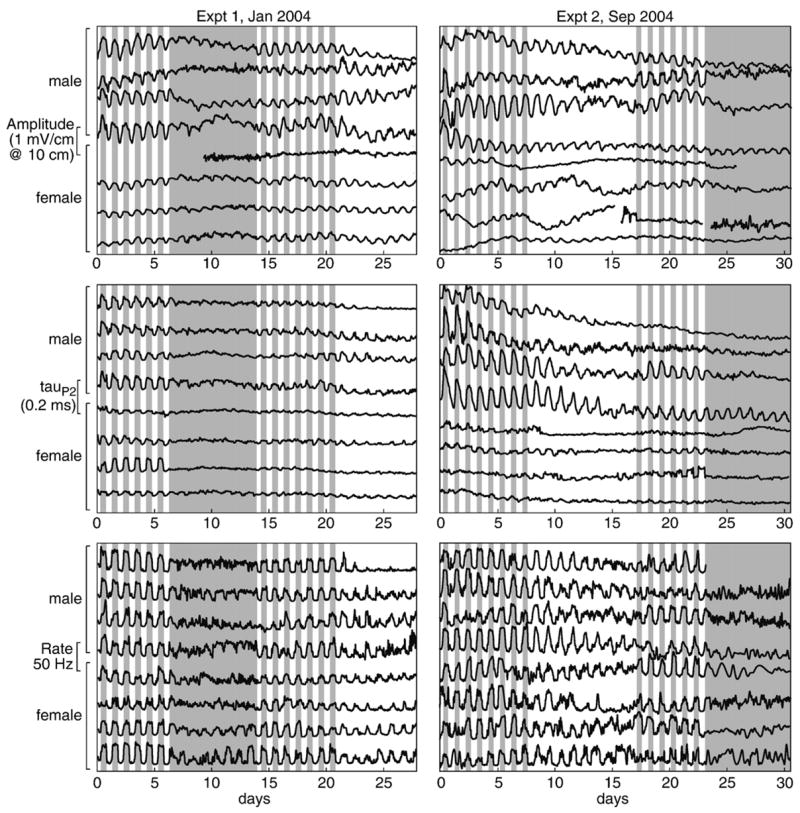Fig. 3.

Detrended circadian oscillations in the 3 measured parameters are shown throughout the month long sample periods for each experiment. The gray-shaded areas indicate lights-out condition. In a few instances, a tank produced too many bad data points to resolve the pattern with a smoothing-spline fit: unresolved data are represented here by gaps in the lines. Rhythms free-ran under constant light and constant dark but generally remained stronger under constant light than under constant darkness. Likewise, rhythms were generally larger in magnitude for males than females, although females showed rhythms in discharge rate similar to those of males. Female rhythms free-ran much stronger for amplitude than for tauP2 where they seemed to disappear entirely in some individuals.
